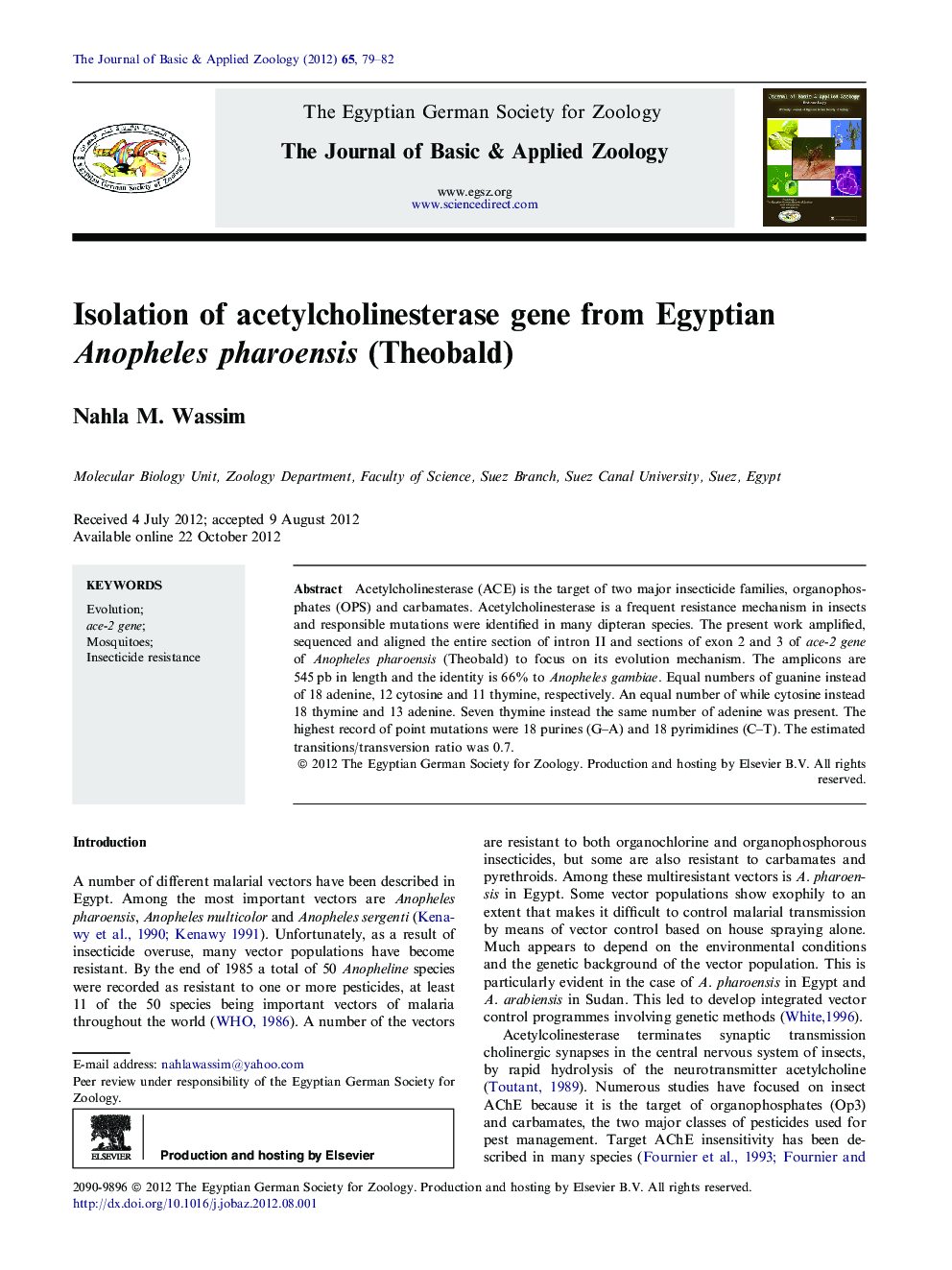| Article ID | Journal | Published Year | Pages | File Type |
|---|---|---|---|---|
| 4493534 | The Journal of Basic & Applied Zoology | 2012 | 4 Pages |
Acetylcholinesterase (ACE) is the target of two major insecticide families, organophosphates (OPS) and carbamates. Acetylcholinesterase is a frequent resistance mechanism in insects and responsible mutations were identified in many dipteran species. The present work amplified, sequenced and aligned the entire section of intron II and sections of exon 2 and 3 of ace-2 gene of Anopheles pharoensis (Theobald) to focus on its evolution mechanism. The amplicons are 545 pb in length and the identity is 66% to Anopheles gambiae. Equal numbers of guanine instead of 18 adenine, 12 cytosine and 11 thymine, respectively. An equal number of while cytosine instead 18 thymine and 13 adenine. Seven thymine instead the same number of adenine was present. The highest record of point mutations were 18 purines (G–A) and 18 pyrimidines (C–T). The estimated transitions/transversion ratio was 0.7.
